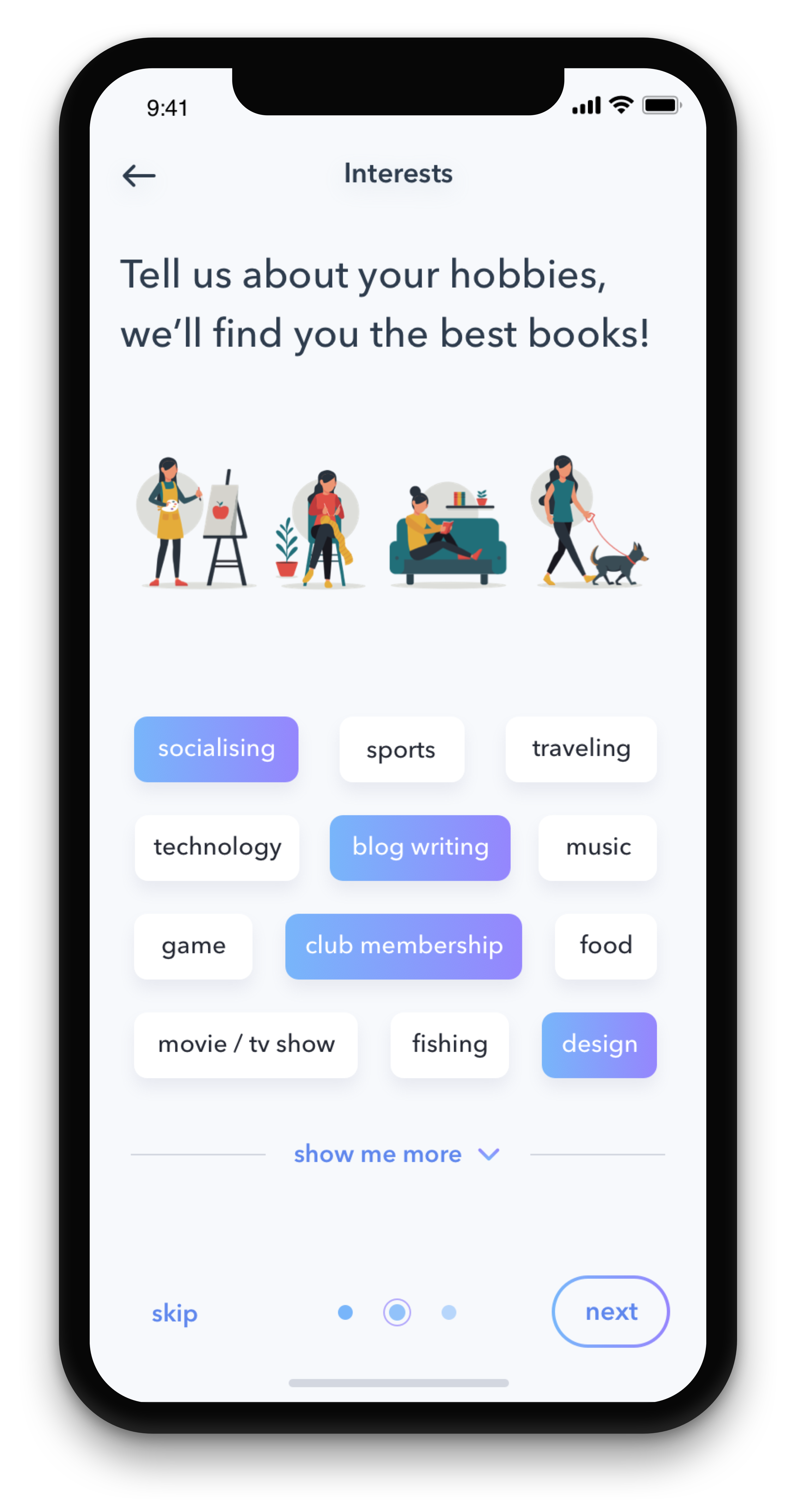Process
The process is based on the Double Diamond Theory and Lean UX.

Designing a mobile app which brings the most critically acclaimed books right to their phone. It allows users to quickly and easily digest new knowledge, expanding their perspectives and feeding their mind. Its tone of voice is playful and inviting, not elitist.
Create a reward program to generate retention and a meaningful incentive for the users. The product is disruptive and an adequate reward should not be like standard bonus programs. Take into account how to reflect an imaginary brand and profound symbiosis of the rewards and offers.
The process is based on the Double Diamond Theory and Lean UX.

1) User
Gathering information about the user to have a clear understanding of their needs. Followup is some of the questions that will help understand those needs.
Demographics
Psychographics
Online behaviours
2) Business
Gathering information about the business requirements and the existing product (if any) to have a clear understanding of the stakeholders and business needs. Followup is some of the questions that will help understand those needs.
Business
Stakeholders
Here are some findings that are based on Market insight and Desk Research on data and habits related to other current loyalty programs.
User
Product & Market
"How might we create a reward program that generates retention, adequately reward users with meaningful incentives and it's profoundly symbiotic with the brand and its purpose?"
Based on the research we know that reward programs are nothing new. Most fall into one of four categories:
Challenges
The reward program would be a pointing system with multiple tiers, but what makes this program different from other reward programs is the key characteristics below:
Here are a few ideas:
A) Personalised, Rewards should be tailored based on users' interests, lifestyle and spending power.
Creating a hyper-personalized and relevant reward list based on users' taste.
B) Flexible, Users should be able to choose how to earn and burn their rewards. Having multiple options to choose would help to cover a bigger spectrum of users with different behaviours and needs.
A pointing system reward program that offers a variety of redeemable choices such as gift cards, discounts, etc.
C) Incentivised activities, Users can earn points for activities which means the reward is not limited to purchases and they can maintain their point-earning momentum in between purchases.
Achieving goals for reading-time.
Friends referral to join the program.
Joining BOOKWORMS book clubs.
Writing review for the books on BOOKWORMS.
Organising book gathering through BOOKWORM.
D) Non-monetary, Reward program should make a real difference on a global scale. It doesn’t necessarily have to offer a monetary incentive in exchange for customer purchases and loyalty. it appeals to customers values and sense of worth.
One-for-one: donating 1 book to schools in an underdeveloped country, for every purchase.
Partnering with tree planting organizations like Treepex. Users collect points until they have enough: a tree will automatically be planted for their customers without any extra cost. It makes use of a high tech tracking system with NFC tags, and carefully selected certified rangers plant and take care of the trees.
E) Help & Growth, Rewards should motivate and encourage the users by building, maintaining and boosting their reading habits.
Discounts, gift cards on relative self-improving programs such as creative writing courses, etc.
Here are a few of the main screens prototypes.
Sign-up flow and the start of the onboarding / personalisation by asking users favorites and interests.

Home, Reward and Profile screens.

Personalisation




Promoting the program & self-growth

Earned points & rewards

List of rewards & tutorial

In retrospect, I could sketch / prototype a few more screens to further elaborate on the rest of the generated ideas. Nevertheless, this challenge gave me a better understanding of the loyalty systems and helped expand my knowledge in this area.